6. Two Revolutions.
There can be little doubt that the American and French revolutions were connected. The Marquis de Lafayette, inspired by events
in America, bought a ship to sail over to Philadelphia to join the colonists in their fight. Later, he returned to Paris to add
his voice to that of Benjamin Franklin to beg for French help. Later still, in the context of the French revolution, he drafted
a Declaration of Human Rights after consulting with Thomas Jefferson, the principal author of the Declaration of
Independence. Although each section of this class focuses on one particular person, the overall theme is how history may be
told through painting—and if told, how it may be slanted or even altered to achieve certain political ends.
The class assumes that you know the basic outlines of the political events behind it. Some years ago, I prepared
a timeline of the French Revolution and Napoleonic era, illustrated with paintings and music; you can find it
here (3 minutes). The YouTube videos on the earlier conflicts are
less artsy, but here are the most succinct ones I can find: French and Indian
War (3½ minutes), and American Revolution (5 minutes). rb.
The script, videos, and images will be posted immediately after class.
Q AND A
Is there any more information on the Roques Death of Marat?
Yes. The date I had on screen was a century out, as I thought. The catalogue entry at the Musée des Augustins in Toulouse
reads (in my rapid translation): "Marat was a deputy for Paris at the Convention and defended popular interests. He voted
for the condemnation of the king, then entered into conflict with the Girondins, whom he strove to elmininate. Several weeks
later, he was assassinated in his bath by Charlotte Corday. This event was depicted numerous times, most notably by David, whose
famous work (now in Brussels) was rapidly copied. Prints of David's picture, which borrowed the typology of a Christian martyr,
were quickly distributed all over France. But Roques, visiting from Toulouse, almost certainly saw the actual picture in the
Louvre in 1793, and was inspired to paint his own version for the Jacobin Club in Toulouse. His work is a free interpretation
of David's original. Although both pictures are very similar in their restrained decorum and muted palette, the Roques version
includes a hat and sash that Marat would have worn in his appearances at the Convention. This approach makes his picture less
artificial and more narrative than David's."
Is it worth my while doing these Q&As?
I have written these question-and-answer updates after most classes so far, which is a lot of work, but nobody has mentioned
them. If you appreciate them, or even if you disagree with what I said, please let me know.
VIDEO LINKS
All the clips shown in class are available on YouTube. rb.
| |
|
|
|
|
|
| IMAGES |
The thumbnails below cover the slides shown in class, though
there may be a few small discrepancies. Click the thumbnail to see a larger image.
Click on the right
or left of the larger picture to go forward or back, or outside it to close. |
 | |
 | |
 | |
 | |
 | |
 | |
 | |
 | |
 | |
 | |
 | |
 | |
 | |
 | |
 | |
 | |
 | |
 | |
 | |
 | |
 | |
 | |
 | |
 | |
 | |
 | |
 | |
 | |
 | |
 | |
 | |
 | |
 | |
Here are brief bios of the artists, composers, and writers considered in the class, listed in order of birth.
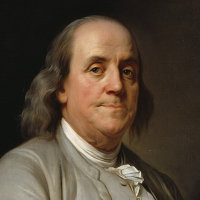 |
Benjamin Franklin, 1696–1790. American polymath.
Printer, journalist, inventor, philanthropist, politician, man of science, and founding father of this country, there seems little point attempting a capsule bio fo Franklin—except perhaps to say that he too was an artist, as writer of the Poor Richard's Almanack and even occasional composer.
|
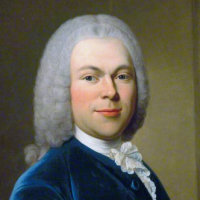 |
Edward Penny, 1714–91. British painter.
Although a founding member of the Royal Academy in 1768, portraitist and history painter Penny is now little known, except perhaps for his Death of General Wolfe (1763), which preceded Benjamin West's iconic version by several years.
|
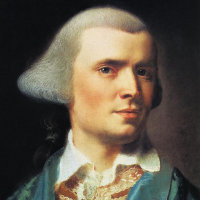 |
John Singleton Copley, 1738–1819. American painter.
Born probably in Boston, Copley established himself as a portrait painter before moving permanently to London at the age of 36. He cemented his reputation with a number of history paintings such as Brook Watson and the Shark (1778), The Death of Chatham (1781), and several Revolutionary War scenes shown from the British perspective.
|
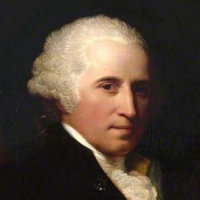 |
Benjamin West, 1738–1820. American painter working mainly in England.
Although he set up as a portraitist, it was as the painter of historical and mythological subjects that he made his name. A founding member of the Royal Academy in 1768, he became its president in 1792. His London studio became a Mecca for American artists studying abroad.
|
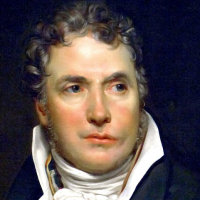 |
Jacques-Louis David, 1748–1825. French painter.
The leading Neoclassical artist of his day, David replaced rococo frivolities with stern history paintings with strong moral content. He was a dedicated supporter of the Revolution and politically active as a Deputy. He was imprisoned briefly after the fall of Robespierre, but resurfaced as principal painter to Napoleon. Through his many pupils, he influenced French salon style for a generation.
|
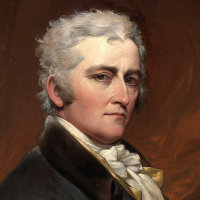 |
John Trumbull, 1756–1843. American painter.
Trumbull fought in the American War of Independence, and founded his career on depictions of battles and other key historical events. He spent several years in London working with Benjamin West, and was even imprisoned there for several months for his part in the Revolution.
|
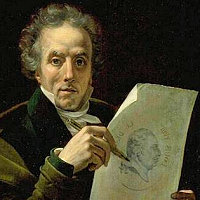 |
Guillaume-Joseph Roques, 1757–47. French painter.
A neoclassical painter based in Toulouse, Roques was an early teacher of Ingres. Aside from a number of religious paintings, he is most interesting for painting a Death of Marat in the same year as David's but incorporating his own variations.
|
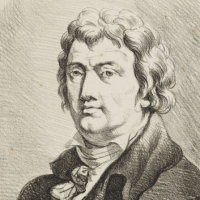 |
François Watteau, 1758–1823. French painter.
François Louis Joseph Watteau was the great nephew of the rococo master Jean-Antoine Watteau. Like his father (also a painter), he was known as "Watteau of Lille." He painted mainly historical and military subjects.
|
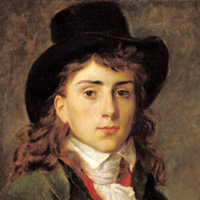 |
Antoine-Jean Baron Gros, 1771–1835. French painter.
After studying with David in Paris, Gros moved to Italy. His 1796 painting of Napoleon at Arcole, done while he was there, won him the patronage of the future Emperor, and he traveled with him in many of his subsequent campaigns, besides establishing himself as a portraitist back in Paris. He was ennobled in 1824.
|
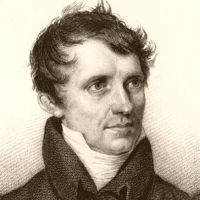 |
James Fenimore Cooper, 1789–1851. American novelist.
Cooper grew up in Cooperstown NY, a community founded by his father. After being expelled from Yale, he served first as a merchant seaman and then in the US Navy. The reputation of his large literary output, once much admired both at home and abroad, now rests mainly on his five Leatherstocking Tales, especially The Last of the Mohicans (1826).
|
 |
Horace Vernet, 1789–1863. French painter.
A contemporary and friend of Géricault and Delacroix, he specialized in literary, exotic, and increasingly contemporary subjects, known for their free handling and striking color.
|
 |
Théodore Géricault, 1791–1824. French painter.
Géricault's monumental Raft of the Medusa (1819) was a seminal work in French art, treating a contemporary political scandal with searing humanity coupled with a monumentality that owes much to Michelangelo. His many studies for this work, including corpses and severed limbs, his portraits of the insane, and above all his numerous paintings of horses, made him a key figure in French Romanticism until his death from a riding accident at the age of 32.
|













































